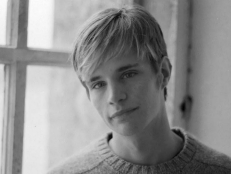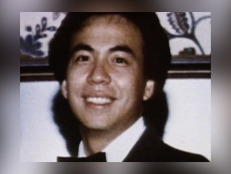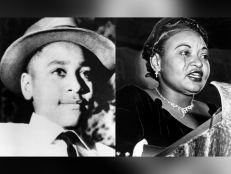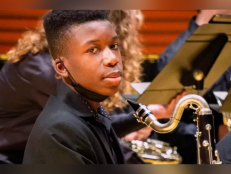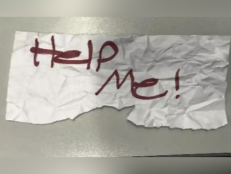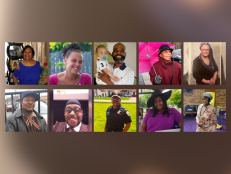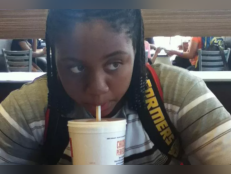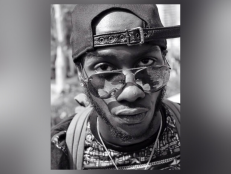5 Facts About The Life, Murder & Legacy Of Matthew Shepard
The 1998 hate crime killing of a young gay man changed society, culture, and the law forever after.
![Matthew Shepard [Matthew Shepard Is A Friend Of Mine/screenshot]](http://investigationdiscovery.sndimg.com/content/dam/images/investigationdiscovery/crimefeed/legacy/2019/06/matthew-shepard-matthew-shepard-is-a-friend-of-mine-screenshot-6052019.jpg.rend.hgtvcom.616.462.suffix/1559753080659.jpeg)
Matthew Shepard [Matthew Shepard Is A Friend Of Mine/screenshot]
In October 1998, the violent, sadistic murder of 21-year-old University of Wyoming student Matthew Shepard sent shockwaves of grief, outrage, and anger throughout the world.
Many observers came to note, however, that, in time, the Matthew Shepard case also generated a greater understanding of fear, prejudice, and injustice that ultimately led to changes in both day-to-day American society and landmark United States legal policies.
Here now are five things to know about the life, death, and legacy of a young man who was beaten, tortured, and killed for the simple fact of being who he was — and how his family fought to make sure the loss of their beloved Matthew would not be in vain.
1. The Early Life of Matthew Shepard
Born on December 1, 1976, to Judy and Dennis Shepard in Casper, Wyoming, Matthew Shepard was described as being amiable and well liked while he was growing up, even though he would occasionally get bullied for being sensitive and physically diminutive.
Just prior to Shepard’s senior year at Natrona County High School, his father accepted a job in Saudi Arabia and relocated the family. Shepard completed his secondary education at the American School in Switzerland, where he studied German and Italian and reportedly took a keen interest in music, theater, and fashion. Shepard graduated with the class of 1995.
That same year, Shepard and three school friends took a vacation to Morocco. In the course of the trip, a gang of locals reportedly attacked the five foot two, 100-pound Shepard — viciously beating, robbing, and raping him. The perpetrators were never caught or identified, let alone arrested.
In the wake of that incident, Shepard reportedly suffered flashbacks, panic attacks, night terrors, and other symptoms of post-traumatic stress disorder (PTSD). As a result, Shepard is said to have sought treatment and was reportedly hospitalized several times to deal with extreme depression and frequent thoughts of committing suicide.
After graduating, Shepard reportedly came out to his mother, who responded by telling him she’d been aware he was gay for quite a while at that point. His family is said to have always accepted Shepard’s sexual orientation.
From there, Shepard briefly studied theater in North Carolina before returning to Wyoming and taking classes at Casper College. It was there that Shepard met Romaine Patterson, an out-and-proud lesbian who became his closest friend and, for a while, his roommate when they both decided to move to Denver, Colorado.
In 1998, Shepard once again returned home and enrolled in the University of Wyoming, reportedly because he said he felt safer living in a small town. Shepard studied political science with an eye on a career in the United States Foreign Service. He also became active in the school’s campus LGBT society and seemed to have found a good place for himself. [Biography]
2. The Murder of Matthew Shepard
On the night of October 6, 1998, the now 21-year-old Matthew Shepard left an LGBT student group gathering on the University of Wyoming campus and stopped to grab a beer at the Fireside Lounge in Laramie.
As Shepard sat nursing a drink, two young men who were also in their early 20s reportedly purchased a pitcher of beer with loose change and approached him. They were later identified as local roofers Russell Henderson and Aaron McKinney. After an hour or so, they offered Shepard a ride home and he took them up on it.
Investigators initially said Henderson and McKinney intentionally lured Shepard away from the bar to rob him, possibly by pretending to be gay themselves. Horrifically, Henderson and McKinney did far more than just take Shepard’s money.
According to the records of McKinney’s own confession, which police say was largely corroborated by Henderson, the two young men drove Shepard to a remote locale and informed him he was going to be robbed.
McKinney allegedly told detectives he punched and pistol-whipped Shepard in the head with the butt of a .357-calber Magnum handgun about 20 times, dragging him all the while to a deer fence lining the property of the Warren Livestock Company.
Once there, Henderson reportedly followed McKinney’s directions and tied Shepard to the fence by his wrists using with a clothesline. The two assailants then allegedly took his wallet and shoes, and left him tied to the post as temperatures dropped below freezing — bleeding, unconscious, and suffering from a fractured skull.
After the attack, Henderson and McKinney reportedly drove back to the Fireside Lounge, where authorities say they got into a fight with a pair of Hispanic youths and each sustained head wounds that required a hospital trip.
In the meantime, Shepard hung on the fence for the next 18 hours, until a passing bicyclist noticed him and, at first, thought he was a scarecrow.
Sheriff’s Deputy Reggie Fluty led an emergency response team and said, because of Shepard’s slight size, he first thought the victim was a child. Fluty also reportedly said Shepard’s face was entirely caked in blood, except for where his tears had left tracks running down his cheeks.
Matthew Shepard lingered in a coma for the next four days before finally succumbing to his injuries on October 12. His parents flew in from Saudi Arabia just in time to see their son die. [CrimeFeed]
3. After a Claim of “Gay Panic” on Trial, Matthew Shepard’s Parents Save the Life of Their Son’s Killer
On October 10, 1998, authorities arrested Russell Henderson and Aaron McKinney, charging them at first with attempted murder, kidnapping, and aggravated robbery. Two days later, after Matthew Shepard died, both suspect faced charges of first-degree murder, which, prosecutors pointed out, would make them eligible for the death penalty.
In addition, police reportedly arrested the suspects’ girlfriends, Kristen Leann Price, 18, and Chastity Vera Pasley, 20, and charged them as accessories to first-degree murder.
Russell Henderson cut a deal in April 1999, pleading guilty to murder and kidnapping in exchange for two consecutive life sentences rather than the death penalty.
That October, Aaron McKinney’s lawyers attempted a “gay panic” defense, claiming that the killer went temporarily insane after being sexually propositioned by his victim.
Prosecutor Cal Rerucha told the press, "The defense is atrocious. It should not be used in any court in these United States. It gives people an excuse to harm another person.”
The judge agreed and dismissed the defense, writing, “There is no proffered evidence of a homosexual rage syndrome that would make the evidence relevant. Even if relevant, the evidence will mislead and confuse the jury.”
After a jury found McKinney guilty of premeditated murder, they began deliberations on whether he should be executed. Dennis and Judy Shepard, saying that they didn’t want to add another killing to this tragedy, then took action to intercede on behalf of their son’s murderer.
Addressing the courtroom, Dennis Shepard read a statement about Matthew’s life and then directly addressed McKinney, saying, “I would like nothing better than to see you die, Mr. McKinney. However, this is the time to begin the healing process. To show mercy to someone who refused to show any mercy. Mr. McKinney, I am going to grant you life, as hard as it is for me to do so, because of Matthew.”
Rerucha said he subsequently reached a deal in which McKinney agreed to serve two consecutive life terms without the possibility of parole. He credited Matthew’s mother with the idea to intercede and added, “I will never get over Judy Shepard's capacity to forgive.” [Los Angeles Times]
4. Compassion & Outrage Alike Draw Global Attention to Small Town Wyoming
Due in large part to the booming early age of the internet, discussion of the assault and subsequent death of Matthew Shepard became a worldwide phenomenon almost immediately.
Numerous candlelight vigils were held all over the globe even before Shepard expired. On the day he died, Poudre Valley Hospital CEP Rulon Stacey told the press, “During the last 24 hours, we've received nearly 2,000 e-mails… [The Shepard family] reiterated in great detail how overwhelmed they are at the worldwide support they have received… Matthew's mother said to me, 'Please tell everybody who's listening to go home and give your kids a hug and don't let a day go by without telling them you love them.’”
On October 14, two days after Shepard died, President Bill Clinton addressed a Washington D.C. vigil attended by thousands, labeling those who committed the crime as being “full of hatred or fear or both” and added, “In our shock and grief one thing must remain clear: Hate and prejudice are not American values.”
Then Fred Phelps showed up. On October 18, the Reverend Phelps and members of his Kansas-based Westboro Baptist Church picketed Matthew Shepard’s funeral, shouting epithets, waving picket signs that depicted “Matt in Hell,” and introducing an international audience to the organization’s most prevalent and pungent slogan, “God Hates F-gs.”
The Westboro Baptist Church went on to become notorious for such displays, showing up to protest the funerals of fallen American servicemen, reasoning that U.S. casualties represent God’s vengeance for the nation’s tolerance of homosexuals.
The father of Matthew Snyder, a Marine who died in Iraq in 2006, filed a $5 million lawsuit against the Westboro Baptist Church for emotional distress, but the Supreme Court dismissed it, citing the organization’s First Amendment rights.
In 2011, Jason Marsden, the executive director of the charitable Matthew Shepard Foundation, told the press that, as vehemently as he disagreed with Phelps, he had to concur with the court. As Marsden put it, “Under the banner of the First Amendment comes a lot of wonderful things. You take the good with the bad.” [Billings Gazette]
5. The Legal, Loving & Life-Affirming Legacy of Matthew Shepard
In December 1998, Judy and Dennis Shepard established the Matthew Shepard Foundation, a charitable organization that addresses LGBTQ issues with an extra focus on the troubles faced by gay youth.
Shepard’s death put various hate crime legislation bills into play over the next decade that resulted in numerous stops and starts.
Finally, in 2009, the Senate passed the bill known as “The Matthew Shepard and James Byrd Jr. Hate Crimes Prevention Act” and President Barack Obama signed the measure into law six days later. Judy Shepard was present for the occasion, as were relatives of James Byrd Jr., a black man who had been dragged to death by white racists the same year that Matthew was killed.
The Laramie Project, a play by Moises Kaufman and the Tectonic Theater Project, premiered to international success in 2000. Consisting of dialogue taken only from actual interviews, news reports, and journal entries, the play addresses the Shepard case from disparate points of view. It was made into a 2002 HBO movie and continues to be performed around the world.
On October 26, 2018, nearly 20 years to the day after he died, Matthew Shepard’s ashes were interred in the Washington National Cathedral. He became the first public figure to receive such an honor since Helen Keller.
Talking to The New York Times, Dennis Shepard said, “I think it’s the perfect, appropriate place. We are, as a family, happy and relieved that we now have a final home for Matthew, a place that he himself would love.” [CrimeFeed]
